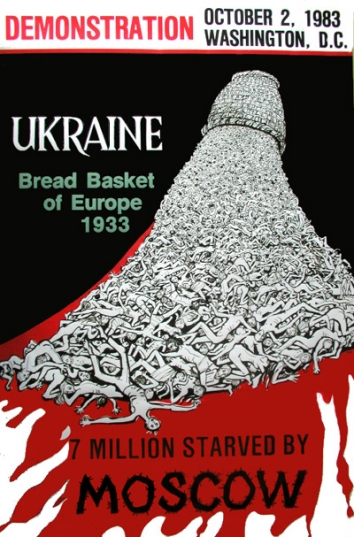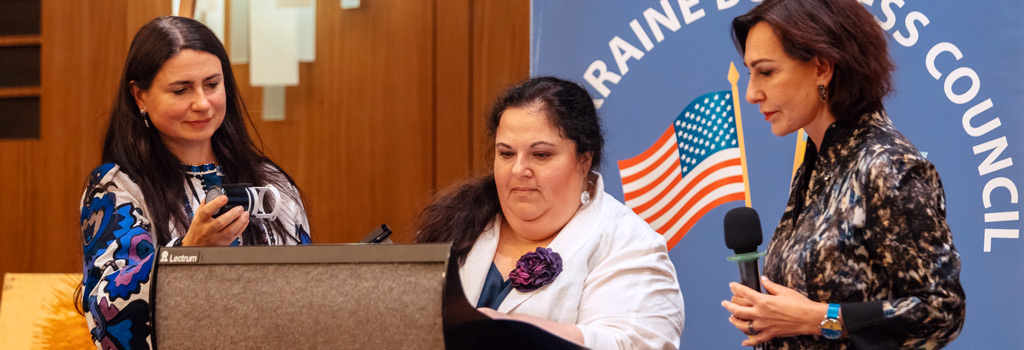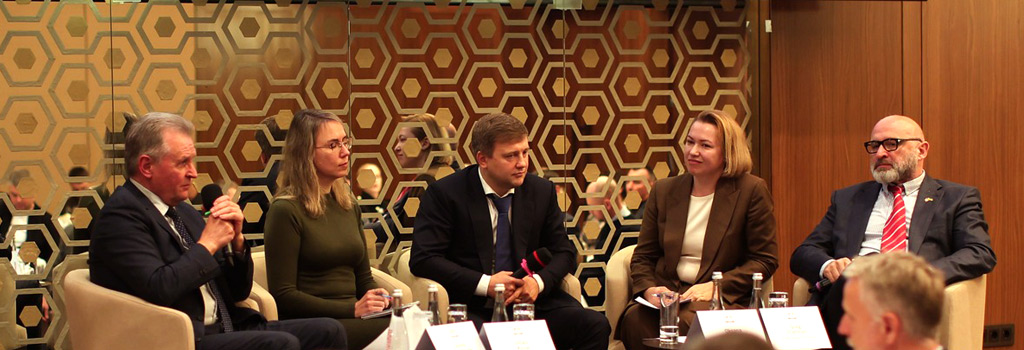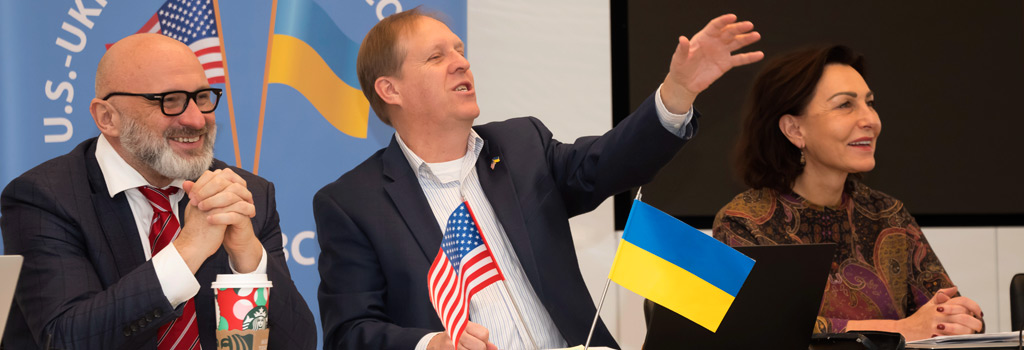Featured Galleries USUBC COLLECTION OF OVER 160 UKRAINE HISTORIC NEWS PHOTOGRAPHS 1918-1997
 Holodomor Posters
Holodomor Posters

UKRAINE - MACROECONOMIC SITUATION – MAY 2018
 ANALYTICAL REPORT: by Oleg Ustenko, Djulia Segura, Valentyn Povroznyuk, Edilberto L. Segura
ANALYTICAL REPORT: by Oleg Ustenko, Djulia Segura, Valentyn Povroznyuk, Edilberto L. Segura
SigmaBleyzer private equity investment management firm & The Bleyzer Foundation (TBF), Kyiv, Ukraine
LINK:Ukr_Monthly_Ec_Report_May 2018.pdf
Published by U.S.-Ukraine Business Council (USUBC),
Washington, D.C., Mon, June 18, 2018
WASHINGTON, D.C. - The "Ukraine Macroeconomic Situation – May 2018" analytical report with several charts and graphs can be found at the link below. The monthly Macroeconomic Situation report is prepared by the SigmaBleyzer multinational private equity firm, www.SigmaBleyzer.com, and The Bleyzer Foundation (TBF), www.BleyzerFoundation.org, Kyiv, Ukraine, who are long time members of the U.S.-Ukraine Business Council (USUBC), http://www.USUBC.org.
Executive Summary
- During May 2018, Russian-backed separatists continued their attacks against Ukrainian troops and civilians on the border areas of the occupied territories. The average daily number of attacks against Ukraine is around 25.
- After weeks of negotiations, Verhovna Rada enacted the Anticorruption Court Law in early June. Seventy percent of the Ukrainian parliamentarians voted in favor of the Law. However, it is not yet clear if this law will be consistent with the recommendations of the Venice Commission. The IMF is studying the wording of the law as it is feared that there may be deficiencies. If this were to be the case, amendments will need to be introduced.
- In April 2018, the Ukrainian economy continued its recovery. In fact, industrial production increased by 3% on a year-over-year basis. This improvement was supported by good performance in mining and quarrying, with mining of coal and lignite increasing by 13.2 % yoy, mining of metal ores by 9% yoy, and quarrying by 5.6% yoy. Manufacturing increased by 0.8% yoy in April, compared to a decline of -4.6% yoy in March.
- Fiscal budget performance continues to be satisfactory. The consolidated fiscal budget of Ukraine was executed with a surplus of UAH 3.0 billion in April. The UAH 3.0 billion surplus was generated solely by local budgets as the state budget was virtually balanced.
- Consumer inflation saw little changes in April. The all items index declined by 0.1 percentage point to 13.1% yoy. Continued supply-driven growth in foodstuff prices remained the major driver of inflation.
- In the banking sector, the growth of hryvnia deposits accelerated to 14.7% yoy in April thanks to more than doubled growth in corporate sector deposits. On the other hand, foreign currency deposits denominated in USD sustained a decline of 0.9%, leading to a reverse of its growth trend. The situation with bank lending activities further improved in April. National currency loans expanded at a rate of 15.7% yoy, while foreign currency loans denominated in USD saw their rate of decline decelerating to 0.6% yoy.
- The UAH/USD exchange rate remained stable in May, ending the month at around 26.1 UAH/USD.
- In April 2018, Ukraine’s current account of the balance of payments achieved a surplus of USD 175 million, compared to a deficit of USD 628 million in March. Such improvement was caused by a surplus in the primary income account of USD 308 million, a surplus of USD 252 million in the secondary income account, and a reduction in the deficit of the merchandise and services trade account to USD -385 million. The current account surplus and financial account inflows of USD 119 million in April let to an increase in international reserves to USD 18.4 billion.
Main Macroeconomic Indicators |
2012 |
2013 |
2014 |
2015 |
2016 |
2017 |
2018f |
|
GDP, USD billion |
173 |
180 |
130 |
87 |
93.4 |
104 |
113 |
|
Real GDP Growth, % yoy |
0.2 |
0.0 |
-6.6 |
-9.9 |
2.3 |
2.5 |
3.0 |
|
Fiscal Balance (incl. Naftogaz/Pension Fund),% of GDP |
-5.5 |
-6.5 |
-11.7 |
-2.1 |
-2.3 |
-1.5 |
-2.5 |
|
Public Debt, External and Domestic, % of GDP |
36.6 |
40.4 |
69.4 |
79.1 |
81.2 |
78.5 |
78.0 |
|
Consumer Inflation, eop, % yoy |
-0.2 |
0.5 |
24.9 |
43.3 |
12.4 |
13.7 |
9.0 |
|
NBU Key Policy Interest Rate, % eop |
7.5 |
6.5 |
14.5 |
17.0 |
16.7 |
16.4 |
17.0 |
|
Hryvnia Exchange Rate per USD, eop |
8.1 |
8.2 |
15.8 |
24.0 |
27.1 |
28.1 |
28.0 |
|
Current Account Balance, % of GDP |
-8.3 |
-9.2 |
-3.5 |
-0.2 |
-3.8 |
-3.7 |
-3.5 |
|
Merchandise Exports, USD billons |
64 |
59 |
51 |
35 |
34 |
40 |
43 |
|
Merchandise Imports, USD billions |
86 |
81 |
58 |
39 |
40 |
49 |
52 |
|
FDI, Net Annual Inflow, USD billion |
8.4 |
4.5 |
0.4 |
3.0 |
3.3 |
2.3 |
5.0 |
|
International Reserves, USD billion |
24.5 |
20.4 |
7.5 |
13.3 |
15.5 |
18.8 |
21.0 |
|
Public External Debt, USD billion |
32.1 |
31.7 |
34.9 |
42.6 |
42.5 |
47.0 |
52.0 |
|
Private External Debt, USD billion |
102.3 |
110.3 |
91.2 |
76.0 |
69.9 |
67.0 |
72.0 |
Political and Reform Developments
In May, the security situation in Ukraine was discussed in a meeting of the UN Security Council. Representatives of the USA and EU and the Ukrainian Minister of Foreign Affairs Pavlo Klimkin made strong calls to Russia to resolve the conflict. The Ukrainian security issue is also in the agenda of the NATO meeting in Brussels, which is scheduled for June. The meeting will be attended by a Ukrainian high level delegation led by the Minister of Defense Stepan Poltorak. It was also announced that a meeting of Foreign Ministers under the Normandy format group (Germany, France, Ukraine and Russia) is scheduled for mid-June to discuss the security situation in Donbas and the need to introduce the UN peacekeeping mission as soon as possible.
After weeks of negotiations, Verhovna Rada enacted the Anticorruption Court Law in early June. Seventy percent of the Ukrainian parliamentarians voted in favor of the Law. However, it is not yet clear if this law will be consistent with the recommendations of the Venice Commission. The IMF is studying the wording of the law as it is feared that there may be deficiencies. If this were to be the case, some amendments will need to be introduced to the law. After the correction of deficiencies, the effective implementation of the Anticorruption Court Law should start a new era in Ukraine’s fight against corruption. It should positively affect the quality of the investment climate in the country. It is also an important element to unblock Ukraine’s access to the funds of international financial institutions including the IMF, EC and World Bank.
On June 7, Verhovna Rada accepted the resignation of the Minister of Finance from his position. This was due to conflicts between the Prime Minister and the Minister of Finance. The Acting Minister will be Deputy Minister Oksana Markarova, who started her career in the public sector right after the Dignity Revolution as a first deputy of the former Minister Natalie Jaresko. The appointment of Ms. Markarova is not expected to affect country’s relations with any of the international institution since she has been deeply involved into the management of the ministry for several years and has pledged to continue the reform agenda of the ministry.
NOTE: The entire Macroeconomic Situation Report for April 2018 can be found at the link below: Ukr_Monthly_Ec_Report_May 2018.pdf

















